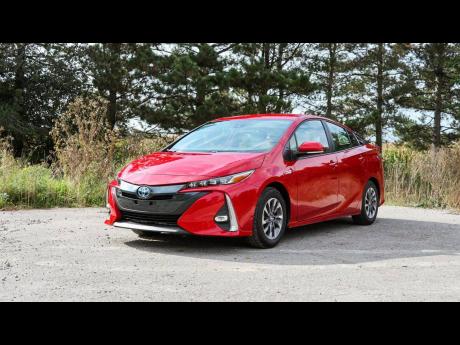Kia Niro - eco friendly in so many ways
Unlike many traditional electric vehicles, Kia does their best to keep the Niro looking futuristic and cool. This is an entry-level vehicle into their climate-friendly ecosystem and is inspired by the Kia HabaNiro concept. The vehicle premiered to much fanfare at an auto show in New York in 2019 and was initially touted to be an “all-electric Everything Car”.
It is designed in a futuristic manner, which is sure to catch the attention of millennials who want to look stylish while feeling like they are protecting the environment. It is more of a subcompact crossover SUV as its overall shape is closer to a car and comes in three versions: hybrid, plug-in hybrid, and battery electric variants.
Much like the recently redesigned Kia badge, the second-generation Niro has undergone a massive facelift to appear younger and vibrant. For starters, the front grille has a ‘Tiger-face design’ with predominantly sharp lines that exude a futuristic vibes. The headlights continue with this theme as the daytime run lights are unconventionally located at the bottom of the headlights.
Step into the future
Digital displays are in abundance even to control most of the climate functions as they blend in seamlessly with the piano black surface, so from a distance, it looks like one big screen. This also means that there are no physical buttons, with the exception of two knobs. Pressing the display strip, for example, to adjust the fan speed - does take some getting used to! - as it pertains to hand-eye coordination.
The company was very serious about their impact on the environment, and as such, used recycled fibres on the ceiling of the vehicle, water-friendly paint on the door panels, and raw material extracted from eucalyptus leaves.
Another prominent element of the interior is the two-spoke steering, which to me, is reminiscent of Isuzu Geminis in the late ‘80s. It is equipped with the usual media buttons to access the infotainment system and driver information. There are also rocker switches to navigate the volume as well as selecting other items. Perhaps the most thoughtful feature is the driver-mode button located at the bottom left. This came in handy when I was switching from Eco to Sport Mode.
Where the speakers are concerned, they aren’t as strong as I would have hoped, so persons will definitely have to go into settings and increase the bass, treble, and mid- levels.
The car makes up for this with convenient features such as USB ports at the side of the front seats, which is also very unconventional. At the back of the passenger seat is an expandable storage pouch, and below the armrest is another storage bin.
Driving experience
As it is a hybrid, power comes from both the engine and the battery, and the version I test-drove was a 1.6-litre engine with a maximum speed of 164km/h. The four cylinders and battery powertrain churns out 139hp in a rapid and confident manner, with the assistance of a dual-clutch transmission.
However, what most persons are concerned about with a vehicle like this is the drive range on a full tank of gas. This is definitely an excellent vehicle to save fuel as I got it with a range of 667km, which took me to St Ann and St Mary on separate occasions and left me with 285km to go. In addition, there is a consumption metre on the eight-inch touch display, which helps to teach the driver to use the vehicle in a manner that is fuel efficient. So if the Niro stays below a certain RPM and is on the flat or a decline, it will take energy from the battery only, based on the information on the screen.
Front visibility is good. Nonetheless, the ‘boomerang’ c pillar is on the thick side, which does obstruct rear view. Also, to my surprise, this vehicle came with a spare tire, which is a major plus in today’s automotive landscape.
On the road
The vehicle has a very good weight distribution, which means that there is little to no body roll when going around corners. The suspension also complimented the performance as it gave the vehicle a very confident and comfortable ride. Another standout feature is the weight of the steering, which is ideal for the average driver.
This is one of the best traction-control systems I have experienced on a front-wheel-drive vehicle as it was able to navigate through uneven surfaces without wheel slippage. This made the car feel like it was a four-wheel-drive vehicle.
It is clear that the Niro is going for a specific market that is sensitive towards the environment and doesn’t want to compromise style or performance. As it delivers on all the major promises made, the only thing to watch now is how consumers react to it.
Price of tested model: $6,995,000
Engine: 1.6-litre four-cylinder and an electric motor
Torque: 195lb ft at 4,400rpm
Transmission: FWD
Fuel tank: 42 litres
Gas consumption: Town - 5.5 L/ 100 km, Highway - 5.5 L/ 100 km
Body Type: subcompact crossover SUV
Competition: Hyundai Ioniq, Toyota Prius
Vehicle courtesy of ATL Tiger Motors. For more information, interested persons can visit www.kia-jamaica.com or call 888-ATL-AUTO (285-2886).





